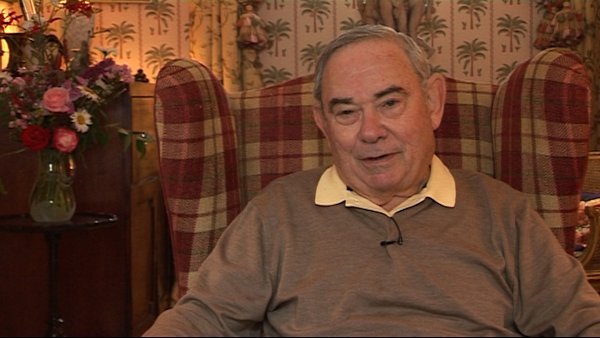NEXT STORY

Why Galveston tap water was special
RELATED STORIES

NEXT STORY

Why Galveston tap water was special
RELATED STORIES


|
Views | Duration | |
|---|---|---|---|
| 31. Professor Charles M Pomerat | 133 | 01:58 | |
| 32. Working with adenoviruses | 62 | 04:09 | |
| 33. A seredipitous discovery | 78 | 04:12 | |
| 34. Why Galveston tap water was special | 93 | 02:15 | |
| 35. Charles Pomerat's polkadot shorts | 64 | 06:07 | |
| 36. Financial security came with the Fellowship at Galveston | 52 | 01:28 | |
| 37. Hilary Koprowski appointed Director of the Wistar Institute | 68 | 02:07 | |
| 38. Hilary Koprowski | 78 | 02:01 | |
| 39. On our way to Philadelphia | 54 | 01:11 | |
| 40. Reconstructing the Wistar Institute | 53 | 02:43 |


One of the interesting things that happened I believe a year before I came to that laboratory that's worth mentioning, because it was still vibrating in the laboratory when I arrived, was a discovery made by a Chinese-American named TC Hsu, H-S-U. TC as he was affectionately known was a worker in Charlie Pomerat's laboratory at a time when it was thought to be true that humans have 48 chromosomes, so that will give you some idea of how primitive our knowledge was at that time which was in the early 1950s, I'm sorry, middle 1950s.
TC's project was to find a way of actually counting chromosomes in cells and culture. Previously people tried to do it in the cells that were dividing in tissue, which is very difficult because you have a three dimensional material and you're looking for a cell that by luck you happen to see dividing, and by luck are able to stain its chromosomes and count them, and that's why 48 became the popular number although it later turned out to be wrong because of the difficulty of doing it. But when you have single cells sitting on the floor of a bottle dividing, you don't have the obstruction of cells on either side, rather top and bottom, and consequently you can do all kinds of tricks.
Well, to shorten this story, TC was trying out a number of different ways of doing this, different solutions and chemicals, when he accepted a job at the Cancer Institute in Houston, Texas, which is just about 50 miles north of Galveston, and he carried these experiments with him, of course, to Houston. But while doing this he… and going back and forth between the two labs in his move, one day he walked into the lab at Pomerat's facility, and under the microscope the chromosomes and a single cell spread out and easily counted. They were not sitting on top of each other like a stack of straws, they were actually spread out. If you imagine a stack of matchsticks all piled on top of each other making it very difficult to count them, and now you see them spread out, separated from each other on a flat surface, easily countable. Well that was a eureka moment of course for him, and he was told by his technician who had set the experiments up for him up for him, how she did this. He went back to Houston, tried to repeat it, and failed, came back to the Pomerat lab, tried to do it again in Pomerat's lab and succeeded. In the Houston lab it didn't work, in the Pomerat lab it did, why? After some worrying and exploring, they discovered the technician had made a mistake, the technician had used, instead of the solution that TC had designed, somehow or other she had simply autoclaved or sterilized Galveston tap water, and that's what worked. We later learned out why – it's a very interesting and important story, because it tells you how accidents, and I'll describe several other accidents later, how accidents yield important results.
Leonard Hayflick (b. 1928), the recipient of several research prizes and awards, including the 1991 Sandoz Prize for Gerontological Research, is known for his research in cell biology, virus vaccine development, and mycoplasmology. He also has studied the ageing process for more than thirty years. Hayflick is known for discovering that human cells divide for a limited number of times in vitro (refuting the contention by Alexis Carrel that normal body cells are immortal), which is known as the Hayflick limit, as well as developing the first normal human diploid cell strains for studies on human ageing and for research use throughout the world. He also made the first oral polio vaccine produced in a continuously propogated cell strain - work which contributed to significant virus vaccine development.
Title: A seredipitous discovery
Listeners: Christopher Sykes
Christopher Sykes is a London-based television producer and director who has made a number of documentary films for BBC TV, Channel 4 and PBS.
Tags: Houston, TC Hsu, Charles Pomerat
Duration: 4 minutes, 12 seconds
Date story recorded: July 2011
Date story went live: 08 August 2012